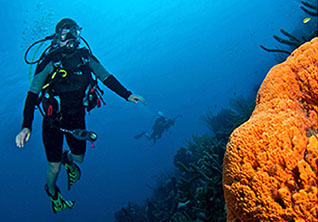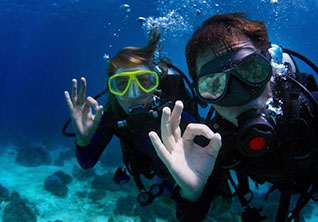The Frog Fish: Nature’s Most Overlooked Camouflage Artist
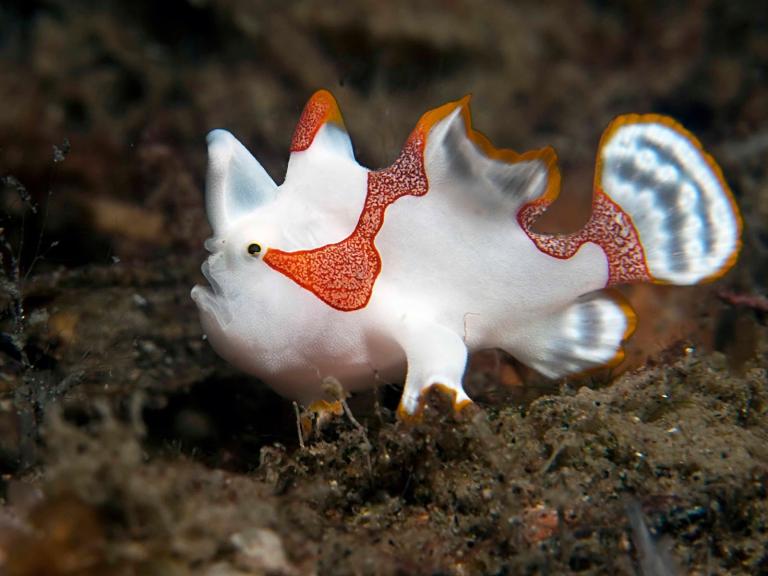
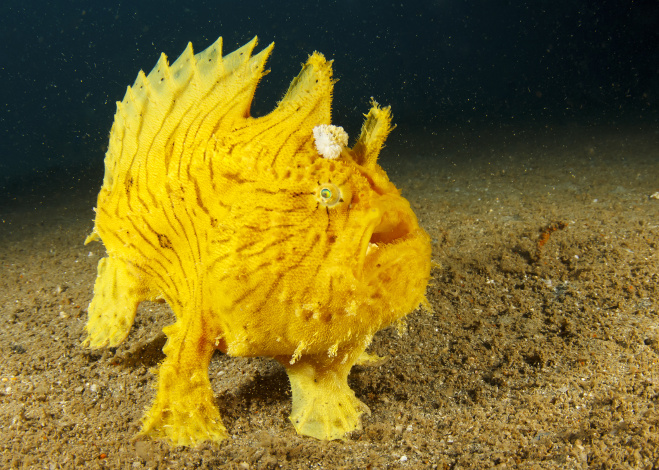
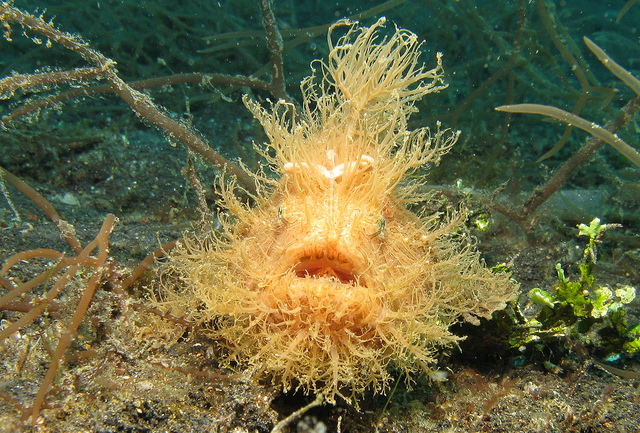
There are over 48 species of frogfish, but few divers ever see them. In fact, most divers can’t see these cryptic colored critters until they are pointed out by a local scuba divemaster or guide. Frogfish are currently found in tropical and sub-tropical waters worldwide except for a few places such as the Mediterranean Sea. The Sargassumfish is a species of frogfish that lives near the surface in a raft of seaweed and has occasionally drifted as far north as Norway. Meanwhile, another species prefers brackish water close to shore. Some species prefer deep water and live as adults down to 4000m.
In Australia they are known as anglerfish, which may be more appropriate as the majority of these fish don’t really look like a frog and most of them have a first dorsal spine that looks like a rod (illicium) and at the end there is a lure (esca). The esca is shaped like the food source that their prey most often is attracted to, so some species have an esca that looks like a worm, while other species may have an esca that resembles a small shrimp or fish. The esca can regenerate if needed, so they never run out of imitating bait.
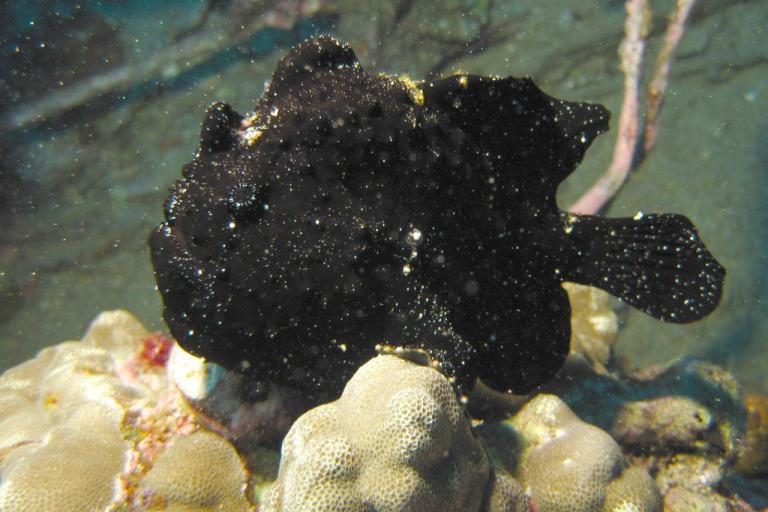
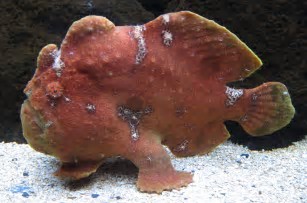
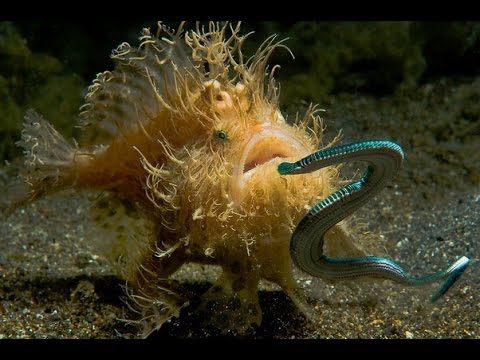
This ability for a fish to fish via rod and lure at first glance seems impressive, but for frogfish this alluring stroke of evolutionary creativity is just the beginning. They can attract fish larger than themselves and they can swallow such unlucky fish in one sudden gulp and this quick gulp process can take as little as six milliseconds to complete. Their prey has no time to react to this speed and that includes other anglerfish that get too close as well. They achieve this overwhelming suction ambush hunting technique by widening their mouth 12 times the natural opening size, doubling their stomach twice their own size, and by pumping extreme ramjet blasted amounts of water out through their gills.
Now, all the things mentioned so far would be spectacular achievements for a typical fish, but this hunting strategy is only feasible because of the aggressive mimicry behavior of frogfish. Frogfish don’t have scales and instead they rely on bare skin to keep them safe from predators. They put themselves right out in the open and in harm’s way, but first they camouflage themselves so brilliantly that most potential predators and photographers alike, swim right over or by them. In order to maintain this “you can’t eat what you can’t see” philosophical way of life, most frogfish can change colors to match their background. This process can take seconds, days, or months. Frogfish not only paint themselves with solid colors, but they can add intimate circles with spectacular detail that allows them to look just like sponges with porous openings. They can add lines to look like seaweeds or add smaller painted pores to look like corals. Their skin can also form into remarkable warts or bumps. Some species even developed what appear to be hairs, tassels, or leave like appendages derived from skin cells. They also allow clumps of algae and hydrozoa to grow or cultivate on their skin to help make them blend in with the surrounding rocks and substrate. They are such masters of camouflage, that one of the best ways to spot them quickly, becomes looking for a clump of algae, coral, or a sponge that to your surprise, has a fish, shrimp, or crab hanging out of its mouth.
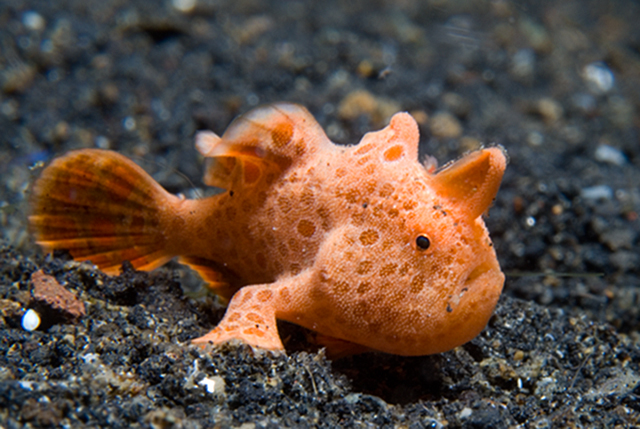
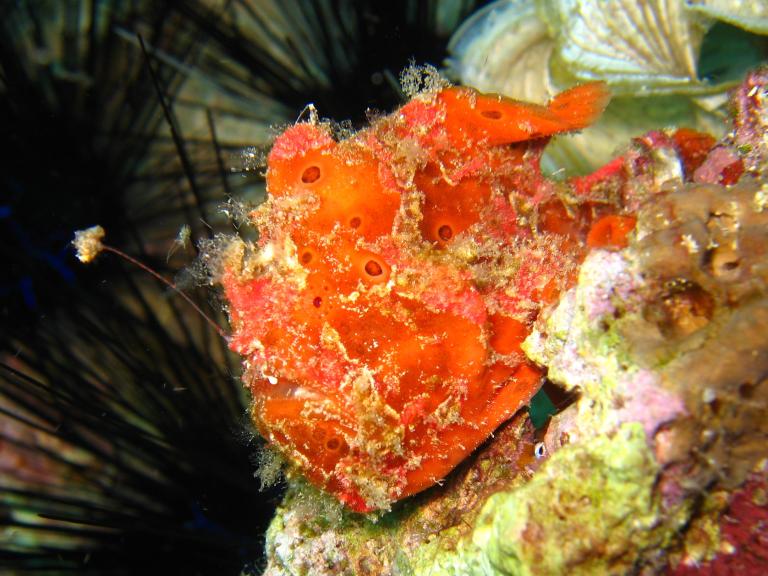
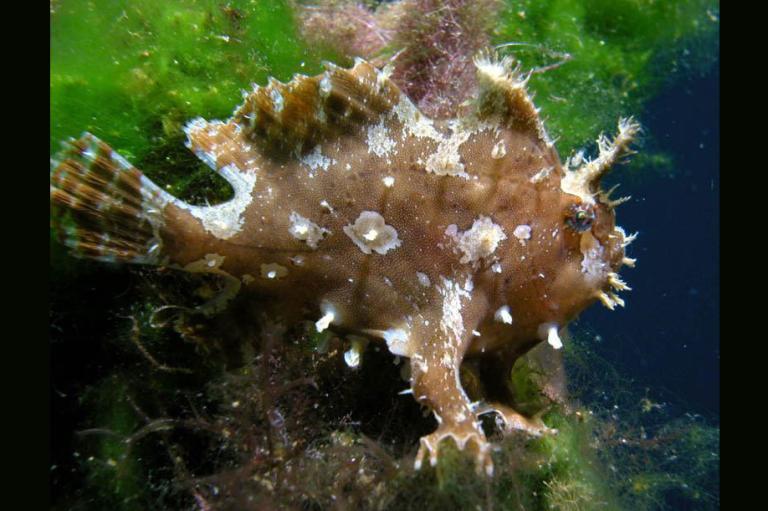
It’s not just the adults that are good at camouflage, but the juveniles do it too. Larval forms floating in the plankton may have little tassels that help make them look like little tentacled jelly fish, and when they get big enough to sink to the ocean’s substrate, the young will change colors so they resemble toxic or foul-tasting sea slugs and flatworms.
Yes, they are cannibals, so no fish no matter what species that is less than twice the size of the frogfish is safe around them. Males may be one tenth the size of females, so after a moonlit night courtship which involves swimming upwards and releasing sperm and eggs, the male may end up as a lite snack if he gets too close to the larger female; it’s just what they do, nothing sexist or personal, fish gotta eat.
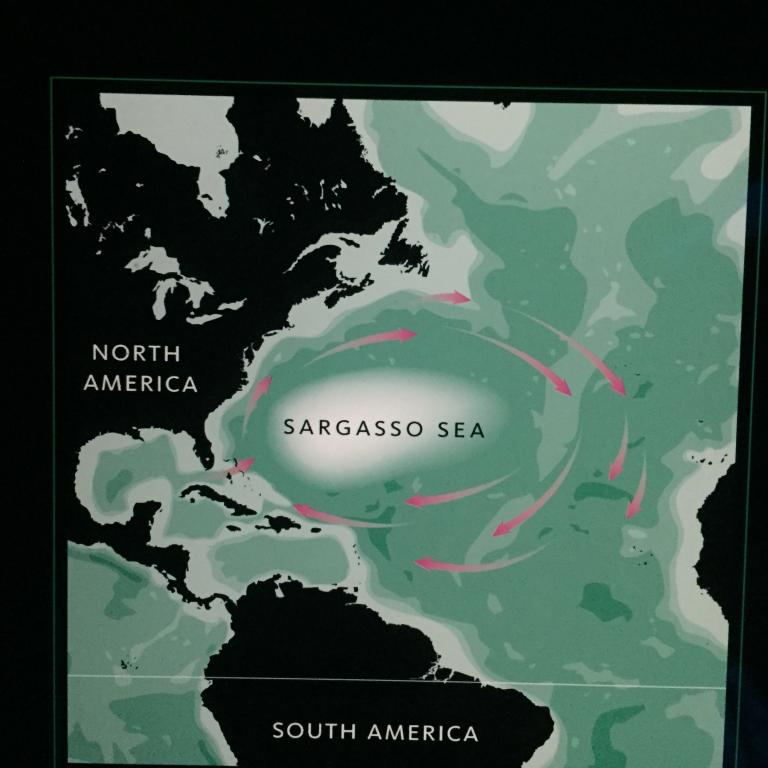
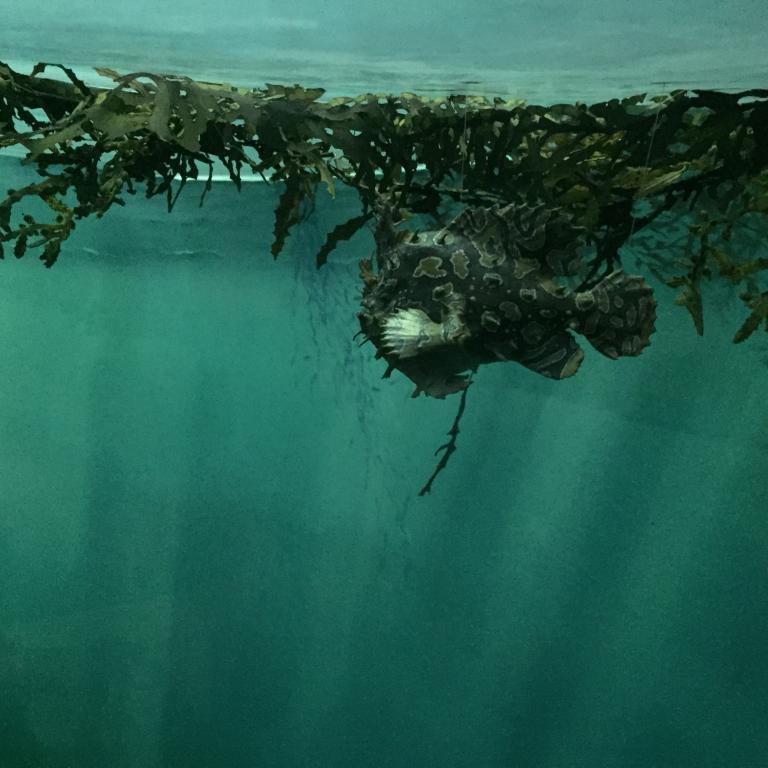
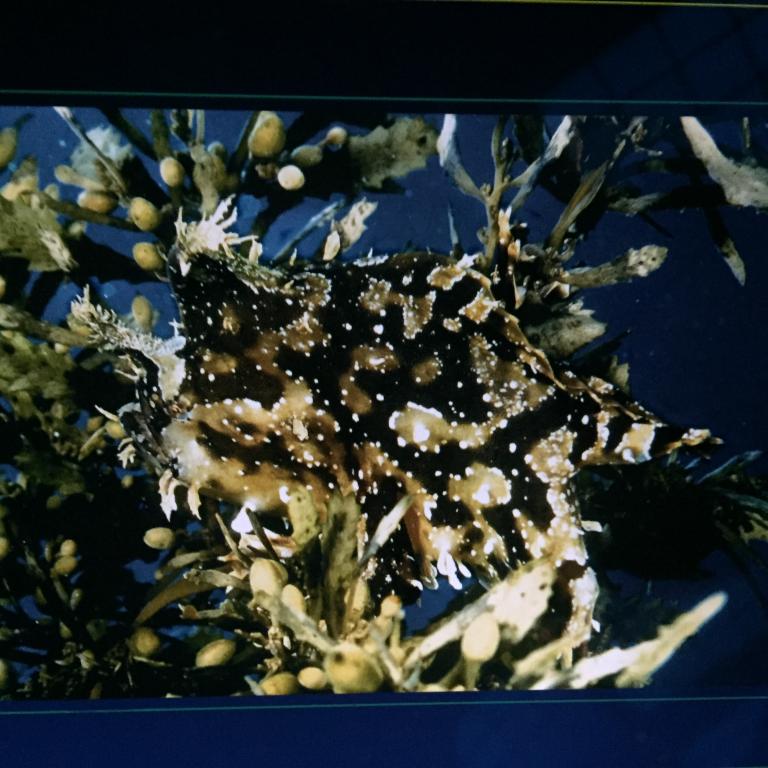
Now you would have to scuba dive around the globe to see most of them as one specie is found only in Hawaii. For the specie found in the Sargasso seaweed it might be easier to visit the display at the American Museum of Natural History in New York City than paddle out hundreds of miles in the North Atlantic looking for the sargassum. Still another new species of frogfish was found recently in the Lembeh Strait off Sulawesi island, Indonesia. Coincidentally, Lembeh Strait has the highest concentration of different species of frogfish in the world. Local divers and resort operators track the movements and whereabouts of different frog fish throughout the year, as some species of frogfish remain in one place year-round if the hunting is good, while others either move around depending on what they currently feel like eating or to avoid predators such as sharks that use electro and chemical sensors to locate food. So, their camouflage may not always work with all predators at all times, but the fossil records show that it has worked pretty well for the last 23 million years and ironically, their evolutionary adaptations and longevity really make frogfish as a species stand out.
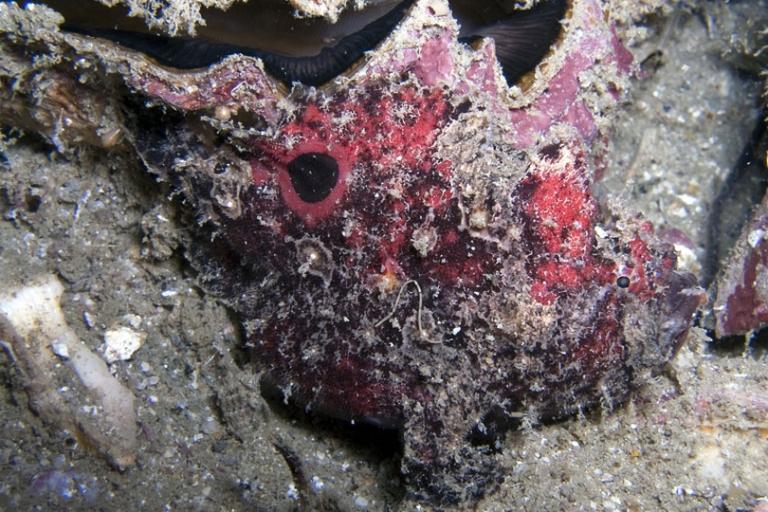
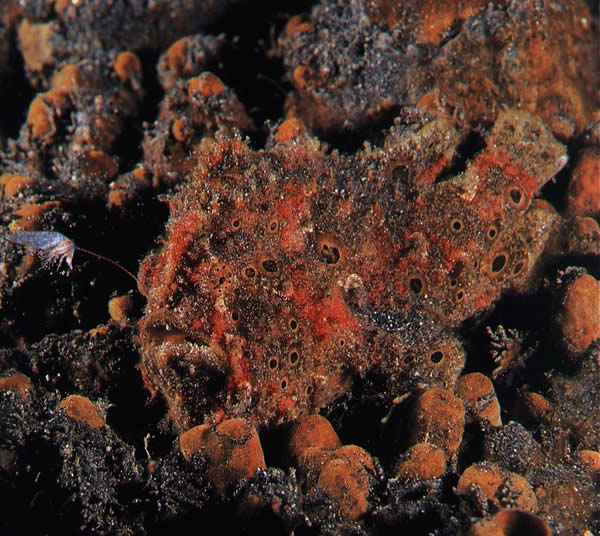
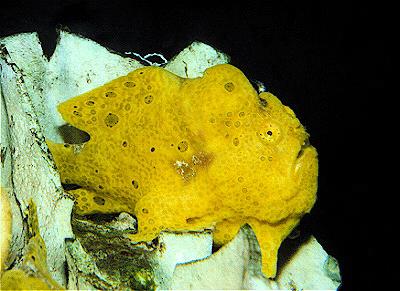

Recent Posts
- Eastern Malaysia, Sabah, Sipadan & More
- Ghost Pipefish, Pipefish, Seahorses, and Sea Dragons
- Australia Queensland and the Great Barrier Reef
- Tioman Islands, Malaysia
- The Riviera Maya
- The Peter Diving System
- The Bay Islands, Roatan, Utila, Guanaja, and more.
- The Cuttlefish; The Undisputed Master of Camouflage.
- The Maldives: A Garland of Islands in the Indian Ocean
- Frogfish, The Overlooked Camouflage Artist
Categories
- Australia
- Bahamas
- Bay Islands
- Belize
- Blue Hole
- Bonaire Diving
- Borneo
- Cayman Brac
- Cayman Islands
- Cozumel
- Curacao
- Cuttlefish
- Dive Destinations
- Dive Equipment
- Dive Liveaboards
- Dive Resorts / Properties
- Dive Travel
- Dive Travel Deals
- Diver Wellness
- Dolphins
- Dominica
- eagle rays
- Eagle Rays
- Family Travel
- Fiji
- Galapagos Islands
- Great White Shark cage diving
- Guanaja
- Honduras
- Indonesia
- Infographics
- Isla Mujeres
- Learning to Dive
- Little Cayman
- Maduro Dive Newsletter
- Malaysia
- Maldives
- Manta Rays
- Marine Life
- Mexico
- Micronesia
- Muck Diving
- Myamar
- Palau
- Papua New Guinea
- Pelagics
- Philippines
- Pinnacles
- Polynesia
- Reefs
- Riviera Maya
- Roatan
- Saba
- Sabah
- Scuba Diving
- Scuba Gear Reviews
- Scuba News/Events
- Scuba Training & Education
- Sea Legends
- sea lions
- Sea of Cortez
- Sharks
- Single Travel
- Sipadan
- Socorro Islands
- South Africa
- Specialties
- ST. Kitts
- Stingrays
- Tahiti
- Thailand
- The Bucket List
- Tobago
- Truk Lagoon (Chuuk)
- Turks and Caicos Islands
- Turtles
- Uncategorized
- Underwater Photography
- Underwater Video
- Utila
- Walls
- Whale Sharks
- Whales
- Wreck Diving
- Wrecks
- Yap
Archives
- January 2024
- April 2023
- March 2020
- March 2019
- January 2019
- November 2018
- September 2018
- July 2018
- May 2018
- March 2018
- January 2018
- October 2017
- September 2017
- June 2017
- April 2017
- February 2017
- January 2017
- October 2016
- August 2016
- July 2016
- May 2016
- March 2016
- February 2016
- January 2016
- December 2015
- August 2015
- June 2015
- April 2015
- January 2015
- November 2014
- July 2014
- April 2014
- February 2014
- December 2013
- November 2013
- October 2013
- September 2013
- August 2013
- July 2013
- June 2013
- May 2013
- April 2013
- March 2013
- February 2013
- January 2013
- December 2012
- November 2012
- October 2012
- September 2012
- August 2012
- July 2012
- June 2012
- May 2012
- April 2012


